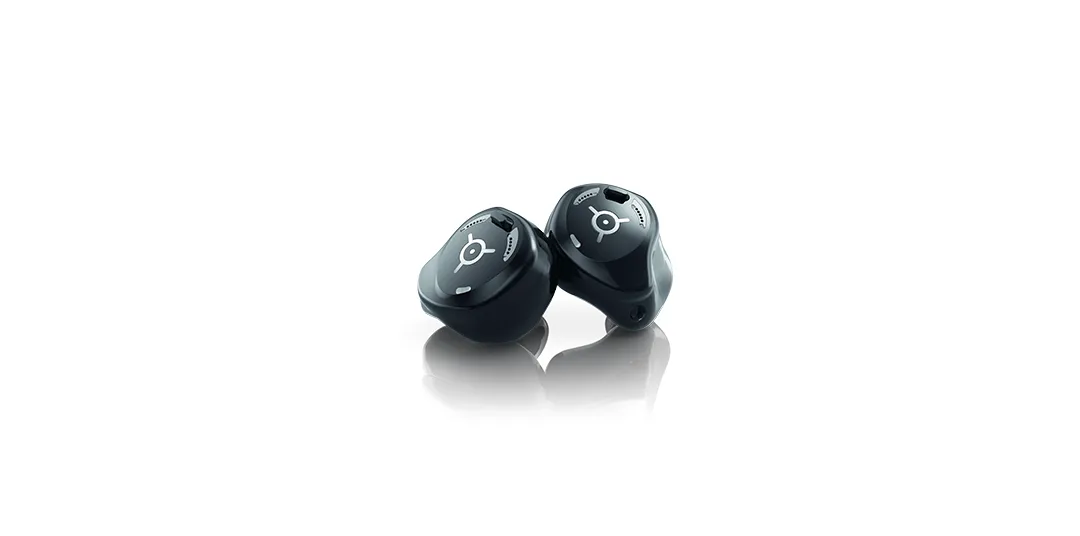Understanding ear infections in kids: Causes, symptoms, and prevention

Understanding ear infections in kids: Causes, symptoms, and prevention
6 min.
Publication Date: January 27, 2021
Article Updated: June 9, 2025
Ear infections are extremely common in children, often causing significant discomfort and worry for parents. In fact, kids are particularly susceptible due to their developing immune systems and unique ear anatomy—and five out of six children experience at least one ear infection before their third birthday, according to the National Institute on Deafness and Other Communication Disorders.
Recognizing the signs of ear infections early and understanding effective treatments and preventive measures can help ensure your child stays healthy, comfortable, and happy.
Note: Our Hearing Care Professionals (HCPs) are here to support your ear health and provide personalized guidance. However, if you're concerned about ear infections or other medical issues affecting your child’s hearing, always consult with your healthcare provider as your first priority.
What are ear infections?
An ear infection, known as otitis media, happens when fluid accumulates behind the eardrum, typically due to viral or bacterial infections. This buildup causes inflammation, leading to pain, discomfort, and sometimes temporary hearing loss. Kids experience these infections more frequently than adults because their Eustachian tubes—the small tubes connecting the middle ear to the throat—are shorter, narrower, and more horizontal, making fluid drainage more challenging.
Symptoms of ear infections in kids
Ear infections can sometimes be difficult for young children to articulate clearly, making it vital for parents to recognize subtle behavioral changes and physical symptoms. Identifying these signs early helps manage discomfort effectively and reduces potential complications. Common symptoms include:
Ear pain or discomfort, often indicated by tugging or pulling at the ear
Trouble hearing or responding to sounds
Fever or general irritability
Fluid drainage from the ear
Balance issues or dizziness
Difficulty sleeping or lying down comfortably
Causes of pediatric ear infections
Several factors contribute to the frequency and severity of ear infections in children. Understanding these causes can help parents take preventive measures and manage risks more effectively. The primary causes include:
1. Common colds and respiratory infections
Colds and flu can lead to nasal congestion and inflammation, blocking the Eustachian tubes and trapping fluid in the middle ear, fostering infection.
2. Bacterial vs. viral infections
Both bacteria and viruses can cause middle ear infections, although bacterial infections may require different treatment approaches, such as antibiotics.
3. Allergies and sinus infections
Allergic reactions and sinus inflammation can lead to swelling in the nasal passages and Eustachian tubes, causing fluid buildup and increasing infection risk.
4. Exposure to secondhand smoke
Children exposed to cigarette smoke are more prone to frequent pediatric ear infections, as smoke irritates the lining of their respiratory passages.
5. Structural differences
The anatomy of children's ears—shorter, more horizontal Eustachian tubes—makes fluid drainage more difficult, increasing their vulnerability to infections.
Treatment for children's ear infections
Effective treatment of ear infections is crucial to quickly alleviate your child's discomfort, reduce complications, and protect their hearing. Treatments typically vary based on the severity and underlying cause of the infection:
Home remedies
Warm compresses applied gently to the affected ear can provide relief from pain and pressure. Ensuring proper hydration helps thin mucus, aiding fluid drainage from the ear. Over-the-counter pain relievers, like acetaminophen or ibuprofen, can significantly reduce discomfort and fever.
Medical treatments
When symptoms persist or worsen, medical intervention may become necessary. If a bacterial infection is suspected, healthcare providers often prescribe antibiotics. It is crucial to follow your healthcare provider's instructions precisely and complete the full course of medication to effectively clear the infection and prevent recurrence. Additionally, medicated ear drops may be prescribed to reduce inflammation and relieve pain.
When to see a doctor
Knowing when to seek professional help is key to managing your child's ear infections effectively. Consult your pediatrician immediately if your child has severe ear pain, symptoms lasting more than two days, a high fever, hearing difficulties, or discharge from the ear. Early medical evaluation ensures appropriate treatment, prevents complications, and reduces the risk of long-term hearing impairment.
Preventing ear infections in kids
While ear infections can’t always be avoided, taking preventive measures significantly reduces their frequency and severity. Adopting these straightforward strategies can make a noticeable difference in your child’s ear health:
Encourage frequent handwashing to prevent colds and respiratory infections.
Maintain a smoke-free environment around your child.
Keep your child's vaccinations, especially pneumococcal and flu vaccines, up to date.
Feed infants in upright positions to prevent milk from entering the Eustachian tubes.
Limit pacifier use, particularly in older infants and toddlers, to decrease ear infection frequency.
Supporting your child's ear health
Understanding why ear infections happen and how to recognize them early empowers you to manage your child's health effectively. By incorporating preventive strategies and promptly addressing symptoms, you can reduce the frequency and severity of ear infections.
If you have any questions, feel free to give one of our clinics a call. However, if you're concerned about your child's hearing or if they’re experiencing recurring infections, always speak to your healthcare provider as your first priority.



